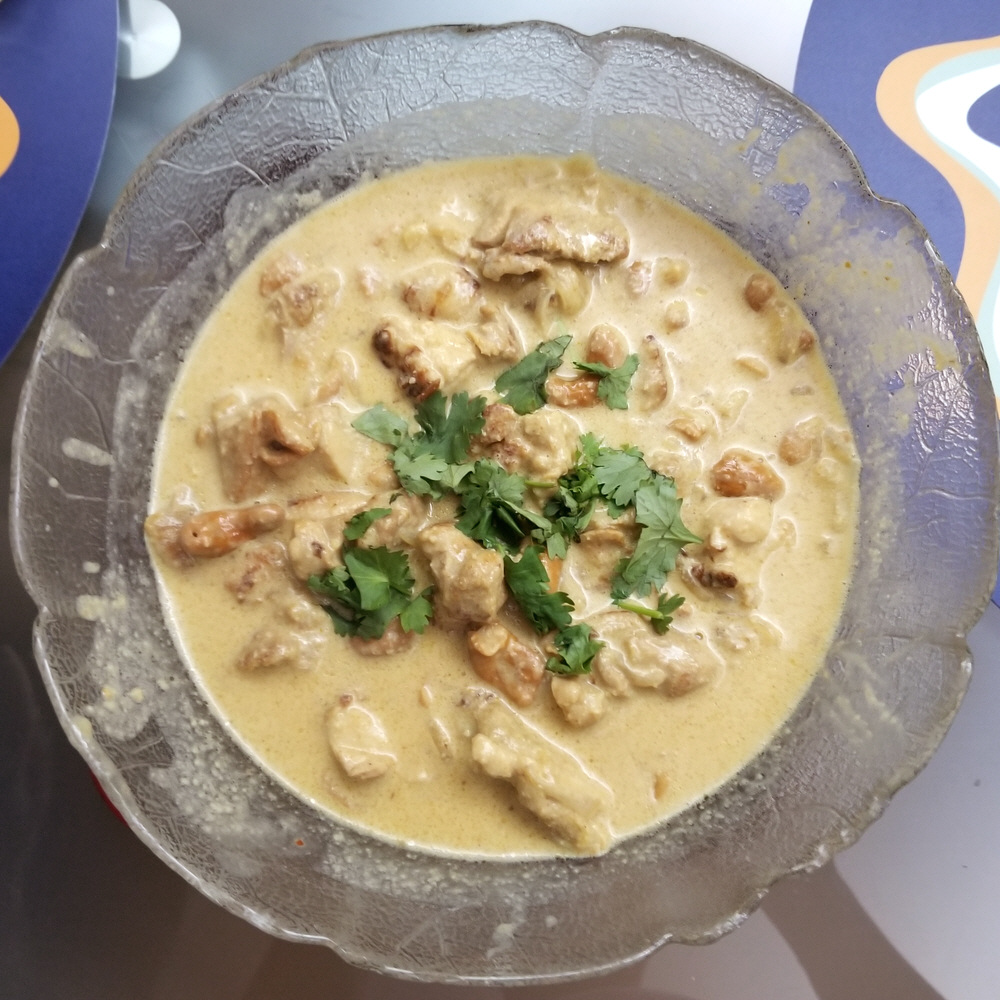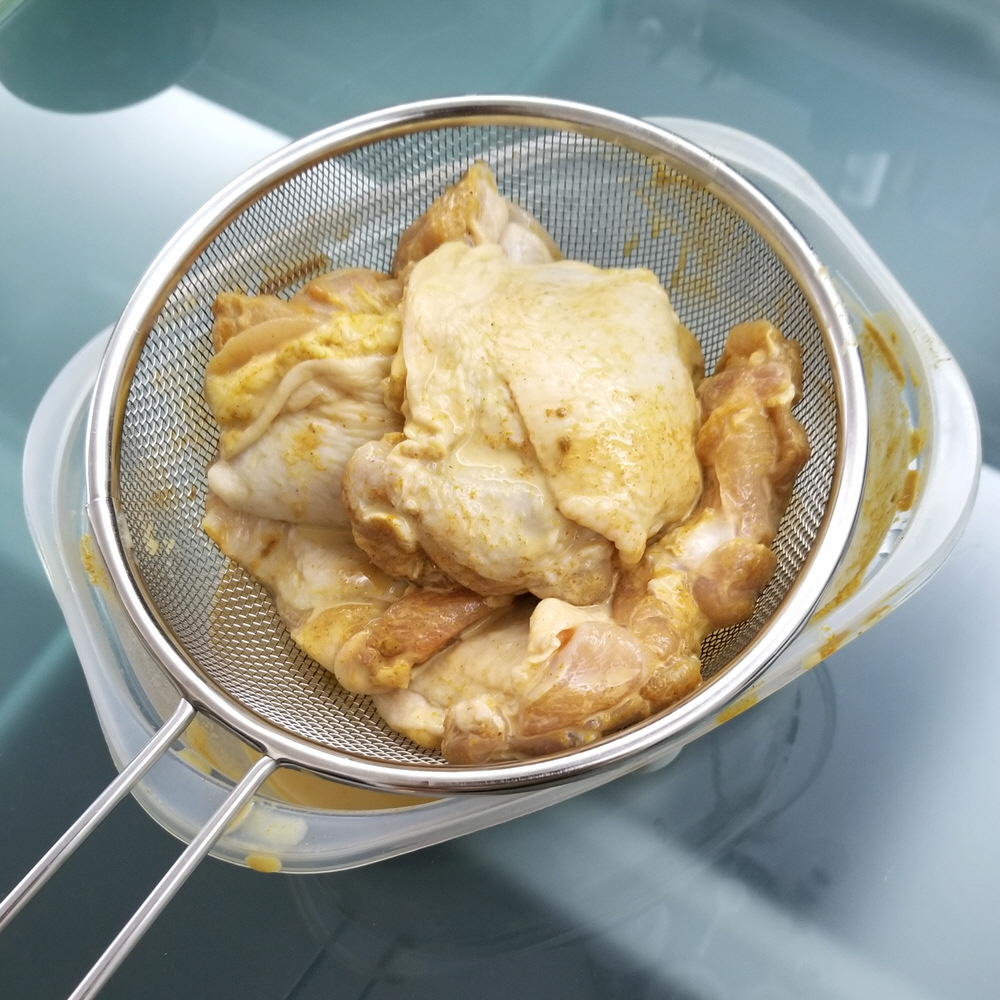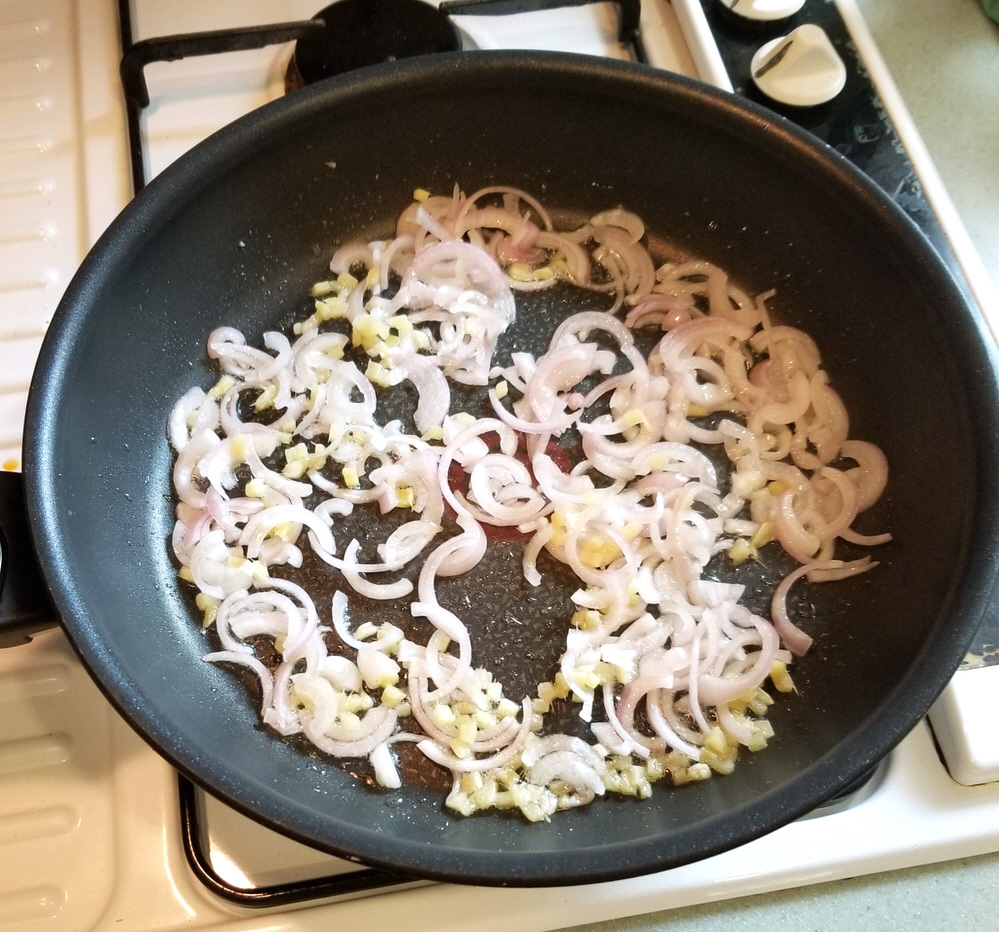(serves 3)
Every place has its own way to prepare Korma but its features are universal. The curry is always cooked using almonds and/or cashew nuts as its base flavour, it is always light couloured and it is always mild. This last characteristic makes Korma the go to curry for anyone who are not into spicy food, and children. The Singapore method uses evaporated milk instead of yogurt or coconut milk to marinate the meat and this creates a distinct texture and taste unique to this method of preparation.
 Ingredients
Ingredients
- Chicken Thighs (4, deboned)
- Shallots (4)
- Ginger (1 thumb)
- Evaporated Milk (100 ml)
- Coconut Milk (150 ml)
- Almond Flour
- Curry Powder
- Cumin
- Chicken Cube (1)
- Cashew Nuts (50g)
Preparation (4-6 hours ahead)
- Place the chicken into a bowl or plastic container and sprinkle in 2 heaped T of curry powder. Evenly coat each piece of chicken. Add 100 ml of evaporated milk, and mix well. Cover and leave in the fridge for a minimum of four hours.


Preparation
- Peel and cut each shallot in half. Julienne the shallots.

- Peel the ginger and cut first into slices 2mm thick. Next slice into strips and then finally cubes.
- Put 3T of oil in a large pan and add the sliced shallots and diced ginger. Pan fry until the shallots start to brown. Transfer the contents to a plate temporarily.
- Dissolve 1 chicken cube in 1 cup of water. Add the resulting chicken stock to the chicken and move the chicken about to wash off the marinade. Drain the chicken in a strainer over the container as shown above.
- Using the same pan, heat up 1 T of oil and pan fry the chicken. Start with a sizzling hot pan and fry the chicken skin side down for 2 minutes. Flip the chicken, turn the heat down and pan fry for a further 2 minutes.
- Transfer the chicken to a cutting board to cool.
- Pour the diluted marinade into the pan and return the shallots and ginger to the pan.

- Bring the pan to a simmer and sprinkle in 4T almond flour and 1T cumin. Stir until there are no clumps and leave on a simmer.
- By now the chicken should have cooled enough to touch. Cut each chicken thigh into about six pieces. Return the chicken together with any drippings back into the pan.
- Add 150 ml coconut milk, 50 g (1/4 cup) of roasted cashew nuts and 1t of sugar. Cover and simmer for an additional 10 minutes.
- Check if you wish to add salt before serving. Chop up 1 sprig of coriander and use it as a garnish.
Notes
- In case you are wondering what is curry powder,
 you can refer to the ingredients listed on the package of curry powder on the right. Curry powder is the base for making curries. It is not the same as Garam Masala, which is just a seasoning.
you can refer to the ingredients listed on the package of curry powder on the right. Curry powder is the base for making curries. It is not the same as Garam Masala, which is just a seasoning. - If you’ll be making other dishes, you can prepare your korma ahead of time and just reheat to serve. It doesn’t taste any better if freshly made.
- The thicker parts of a chicken thigh will not be cooked from 4 minutes of pan frying, especially without a drop lid. That’s fine, simmering in the curry will finish the job. The idea is to caramelize the chicken and extract the oil and flavour from the skin.
- I find cutting the chicken using a pair of kitchen scissors easier than using a knife.
- Though its not part of the recipe, you should serve your korma with steamed rice or some kind of Indian bread.






 and methodically crush with the jagged face of a meat mallet. There is no need to hammer; simply press down firmly on the smooth face of the mallet head (see picture). Again, there is no need to completely pulverize the bread, you want some variety in crumb size.
and methodically crush with the jagged face of a meat mallet. There is no need to hammer; simply press down firmly on the smooth face of the mallet head (see picture). Again, there is no need to completely pulverize the bread, you want some variety in crumb size.





